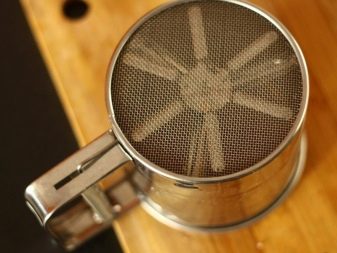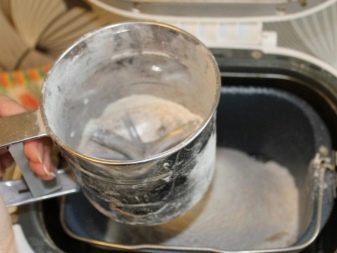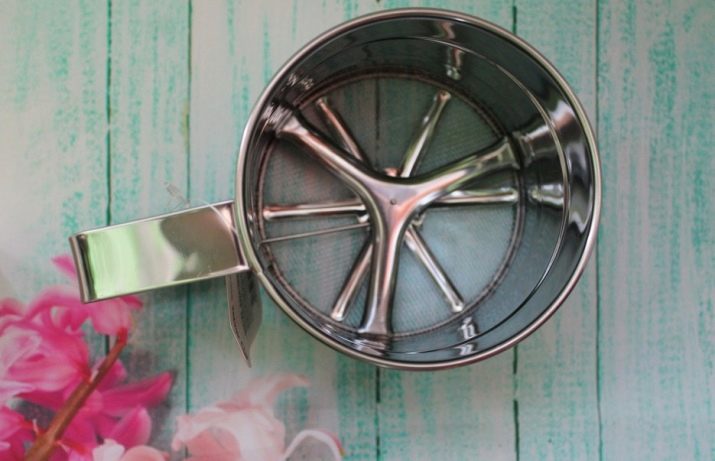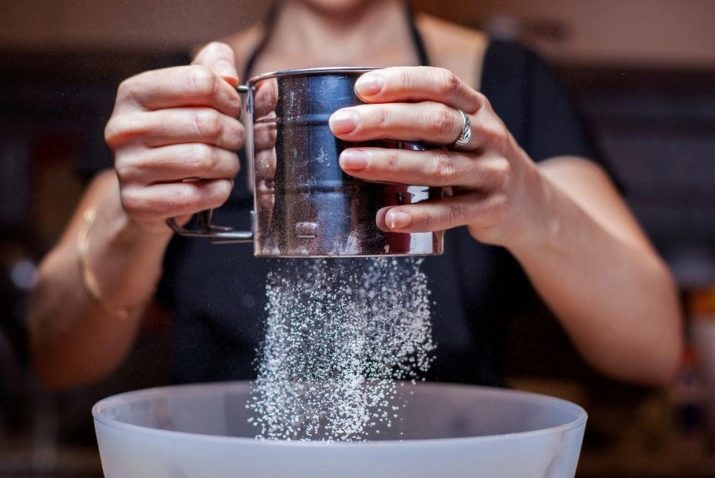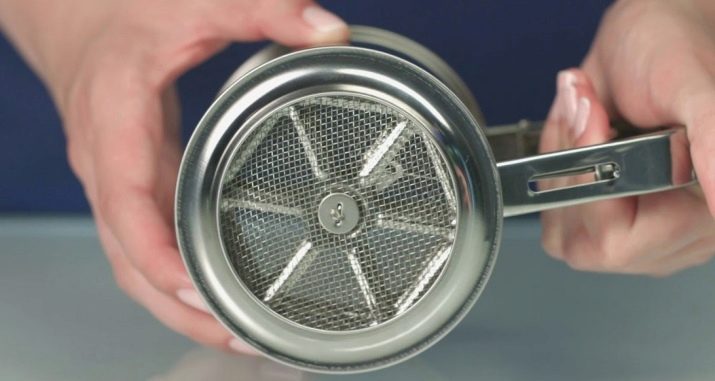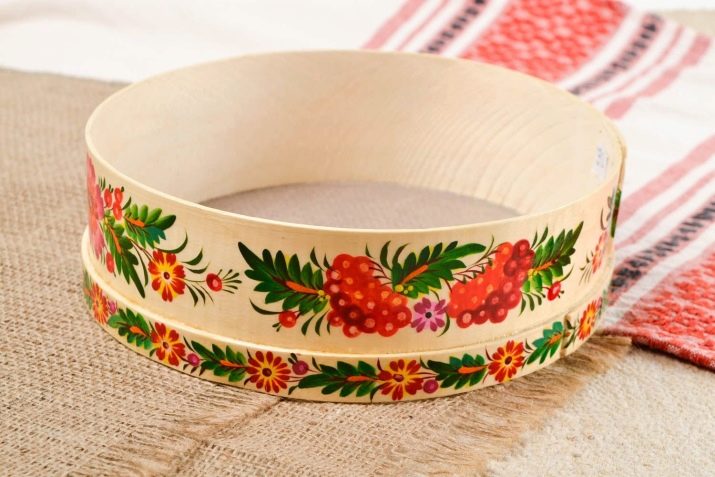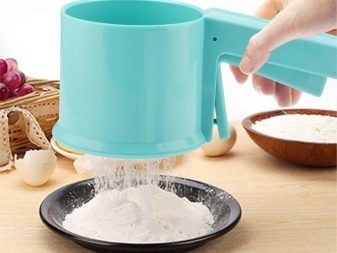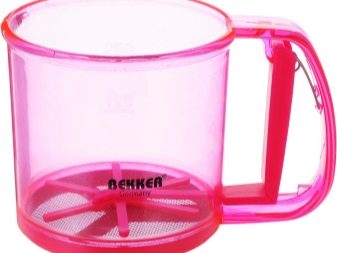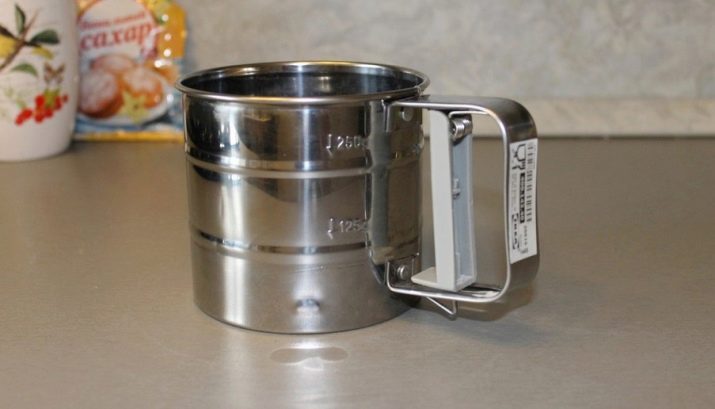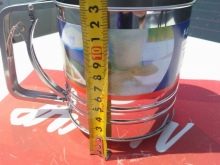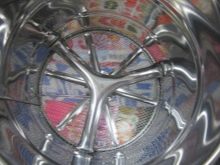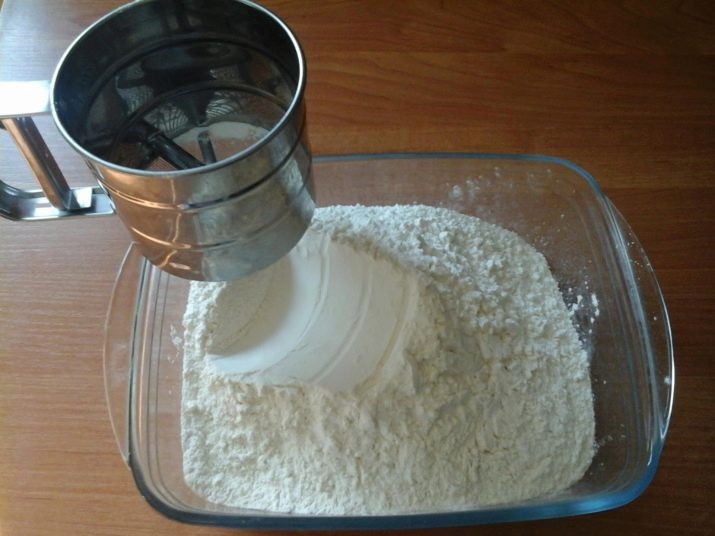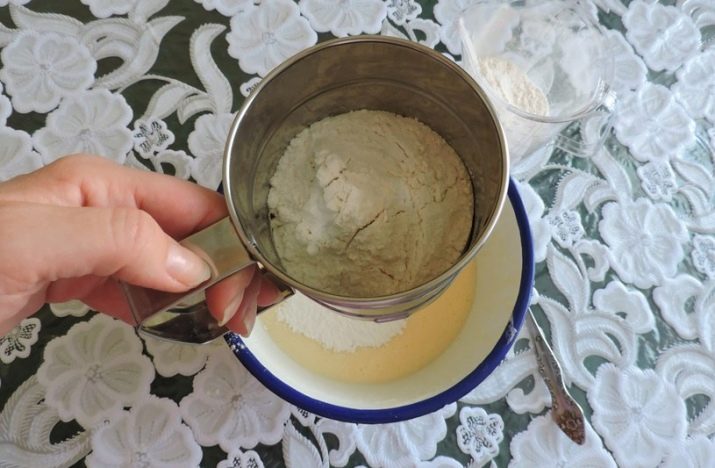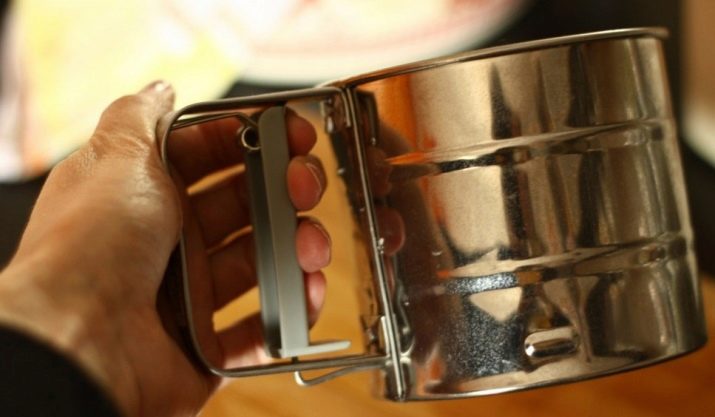Mug-sieve for sifting flour: features, types and selection criteria
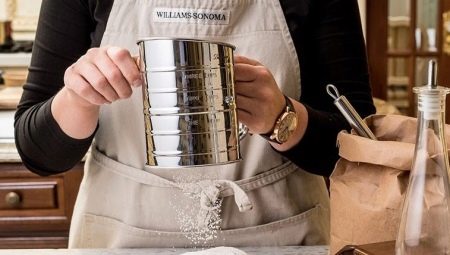
Every housewife knows that cooking is a delicate matter. There are no trifles here, especially baking. In order to bake a delicious, lush bread or fragrant buns, you need to sift the flour. Unfortunately, many people refuse this process. The traditional old-fashioned way is unpleasant. Mechanical sieve circles come to the rescue.
Advantages and disadvantages
Anyone who has ever used a mug-sieve, made sure the many advantages compared with other forms of cooking utensils.
Simple adaptation, invented by our ancestors, has not lost its relevance to this day. The essence has remained, and the external image has changed. Shops represent a variety of samples: a sieve-circles, in the form of a cone, a colander-sieve with a handle, a sieve with a lever or a rotating handle. It all depends on the needs of the chef.
Among the advantages can be noted a number.
- Eliminates impurities and foreign particles (bugs, mealworm, starch plates, etc.).
- Sooner or later, even the highest-quality raw materials are crushed and become damp, forming lumps. Screening helps to get rid of them, making the consistency more uniform. Enriches flour with oxygen, giving it porosity.
- Compactness. The device is small. It will not take up much space in the kitchen.
- Simplicity. Just a few quick movements and no shaking sieve.
- Multifunctional. In the manufacture of bakery products and sweets to use for sifting not only flour, but also other bulk components (cocoa, powdered sugar, starch, spices). With the help of a sieve-cup it is convenient to breaded pieces of fish and meat.
- Thrift. Thanks to the form, the contents do not pour out over the edges, the consumption is minimal.
Not a lot of disadvantages. It all depends on the material that the manufacturer uses. A metal cup can rust with time, a plastic cup may crack. Some have noted that a spring might jam. But all these nuances depend on how to use and care for the mug.
Materials
Today, manufacturers produce mugs from various raw materials.
Considering what the body is made of, the sieve can be made of wood, plastic or stainless steel.
Wooden are considered classic, but they are becoming smaller. They are less practical and have the ability to absorb all kinds of flavors, which adversely affects the manufacture of bakery products.
By the budget option include plastic sifter. It is easy to use, without requiring special skills in the application. Plastic should be food, with a smooth surface, odorless and no extra joints.
Do not forget, the plastic cracks and cracks over time. Keep away from sunlight. In addition, such a thing should not be dropped on the floor, it will lead to mechanical damage to the product.
Metals have the best properties. Distinctive feature - strength and durability. The deformation of the hull and structural elements is excluded. Easy to clean and dries quickly. This is especially important for those who require the use of additional ingredients.
The sieve from such material is considered environmentally friendly. It does not react with other food products, which allows them to preserve their flavor and color.
Device
The main specificity is the simplicity of the mechanism. Mechanical, manual sieves are used at home. Mug-sieve - the simplest, but the necessary adaptation, which without much effort can be found in hardware stores. It is not by chance that housewives choose just such a model, considering it as the most convenient in everyday life.
It is designed so that any hostess can easily cope with a mug-sieve. The design resembles a regular mug with or without a lid, providing tightness. For convenience, the sieve can be put on an inverted lid.
Instead of a bottom, a sieve with metal blades in the shape of a star and a special recess is inserted, which allows the sifting process to be made more efficient. The bottom is double or triple. A glass has a graduation scale with divisions from 50 to 250 mg, with which it is easy to determine the required amount of flour.
The lever handle consists of two sections with a spring that actuates a rotating mechanism. The bucket is comfortable to hold in your hand, which makes the work less time consuming and more accelerated. Flour is poured, blades are set in motion by arbitrary presses on the handle. Bulk ingredient passes through a sieve, spilling out in another container or on the board. Excess garbage, undesirable in the test, remains in the circle.
A sieve in the form of a mug for sifting flour makes it possible to keep the working area of the tabletop always clean. Positive user feedback confirms this.
Recommendations for use
By purchasing a new kitchen equipment, any hostess expects that he will serve for many years and will bring only benefit without causing any trouble. Beautiful and radiant appearance of new products pleases the eye. The first use of the mug-sieve causes only positive emotions and the desire to cook even more delicious dishes.
In order for the sieve to retain its impeccable properties, it is necessary to take care of it, to follow the elementary rules of care and operation.
- Wash after each use. Clean the important attribute utensils cook easy. It is enough to rinse with warm water. Can be washed in the dishwasher.
- Be sure to wash the sieve in warm water with soap before the first use, rinse and wipe dry.
- For washing it is best to use a liquid detergent and a regular sponge. In no case is it recommended to use metal scourers, products with chlorine and dry substances with small abrasive particles.
- Rinse the sieve thoroughly so that there are no microparticles of soap left in the sieve that can get into the dough in the future.
- After each wash, wipe dry with a strainer. So you can avoid limescale and divorce.
- During use, stains may appear on the dishes. They are easy to remove with a solution of table vinegar or citric acid.
- It is recommended to store in a dry and clean place.
It happens that the mechanism of the unit is broken, the spring has taken off. Most often this happens if you drop the sieve mug. The mechanism of the product shifts when falling, flour begins to sift slowly and poorly. You no longer want to get rid of your favorite sieve. Then there is one option - to insert the spring back and collect the kitchen attribute. Carefully pull the sieve away from the cup, reach into the attachment lever and put it back.
If this does not work, you will have to buy a new sieve. Professional repair is meaningless, as it will cost more than a new product.
Tips for choosing
When purchasing such an important culinary thing, consider some nuances.
- It is worth paying attention to the design. The range is quite rich. The choice is purely individual. It all depends on how often you have to use the sifter.
- The cost of this item is usually small, and each hostess can afford to buy it.
- When choosing, consider the scale, capacity and sieve dimensions. Focus on your needs and those products that are going to be used in cooking.
- Cells can be made of polyamide, steel or nylon. Each has its own characteristics.Kapron inexpensive, but also short-lived. Kapron is destroyed under the action of ultraviolet rays, so it is better to store the product in the closet. Polyamide may sag with time, which is extremely inconvenient. The best option is a stainless steel sieve.
- Give preference to universal models that combine several functionalities with which you can sift not only the main ingredient.
Manual mug-sieve is not only an indispensable tool in your kitchen, but also a stylish element of kitchen design!
In the next video you will learn how to properly collect the details of the flour sieve cup.
